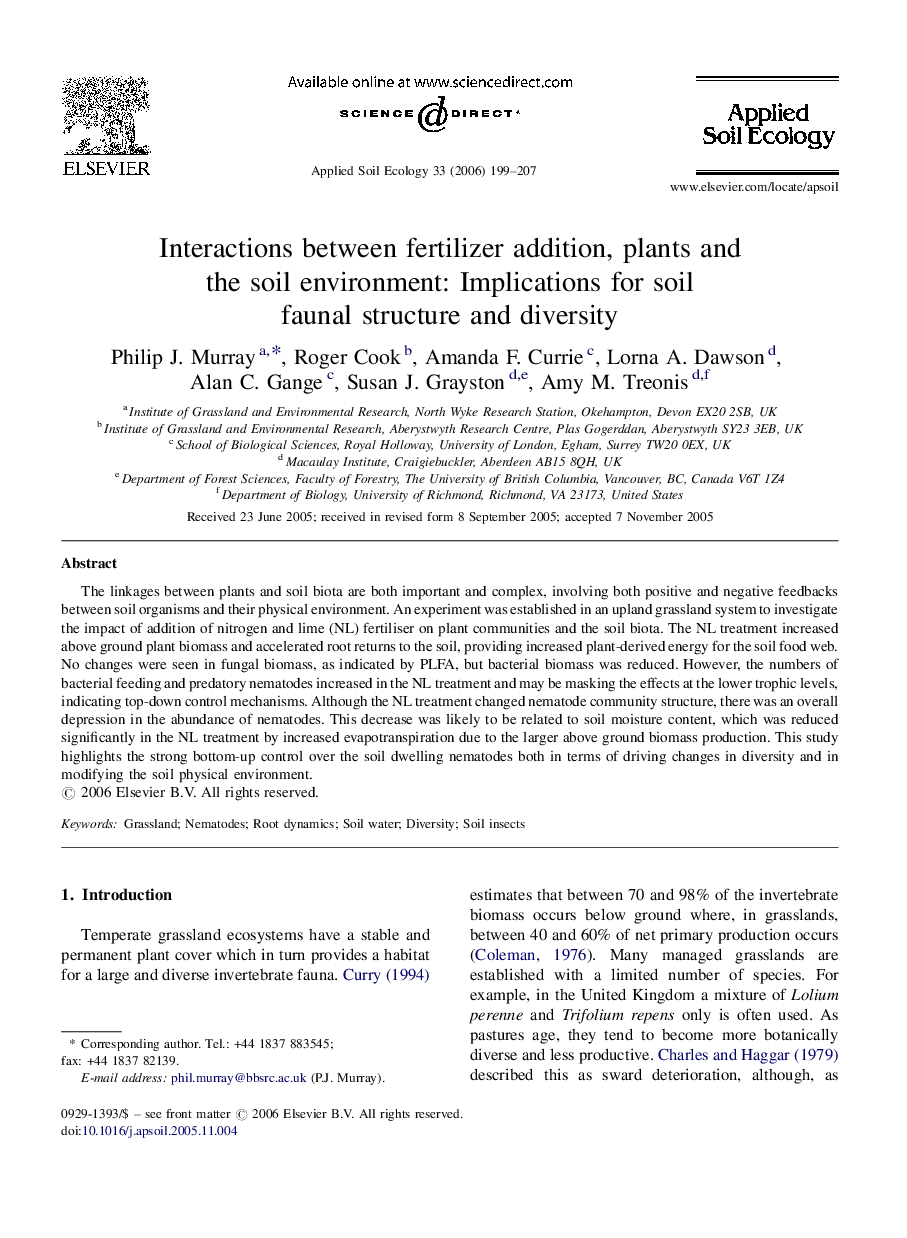| Article ID | Journal | Published Year | Pages | File Type |
|---|---|---|---|---|
| 4383476 | Applied Soil Ecology | 2006 | 9 Pages |
Abstract
The linkages between plants and soil biota are both important and complex, involving both positive and negative feedbacks between soil organisms and their physical environment. An experiment was established in an upland grassland system to investigate the impact of addition of nitrogen and lime (NL) fertiliser on plant communities and the soil biota. The NL treatment increased above ground plant biomass and accelerated root returns to the soil, providing increased plant-derived energy for the soil food web. No changes were seen in fungal biomass, as indicated by PLFA, but bacterial biomass was reduced. However, the numbers of bacterial feeding and predatory nematodes increased in the NL treatment and may be masking the effects at the lower trophic levels, indicating top-down control mechanisms. Although the NL treatment changed nematode community structure, there was an overall depression in the abundance of nematodes. This decrease was likely to be related to soil moisture content, which was reduced significantly in the NL treatment by increased evapotranspiration due to the larger above ground biomass production. This study highlights the strong bottom-up control over the soil dwelling nematodes both in terms of driving changes in diversity and in modifying the soil physical environment.
Related Topics
Life Sciences
Agricultural and Biological Sciences
Ecology, Evolution, Behavior and Systematics
Authors
Philip J. Murray, Roger Cook, Amanda F. Currie, Lorna A. Dawson, Alan C. Gange, Susan J. Grayston, Amy M. Treonis,
